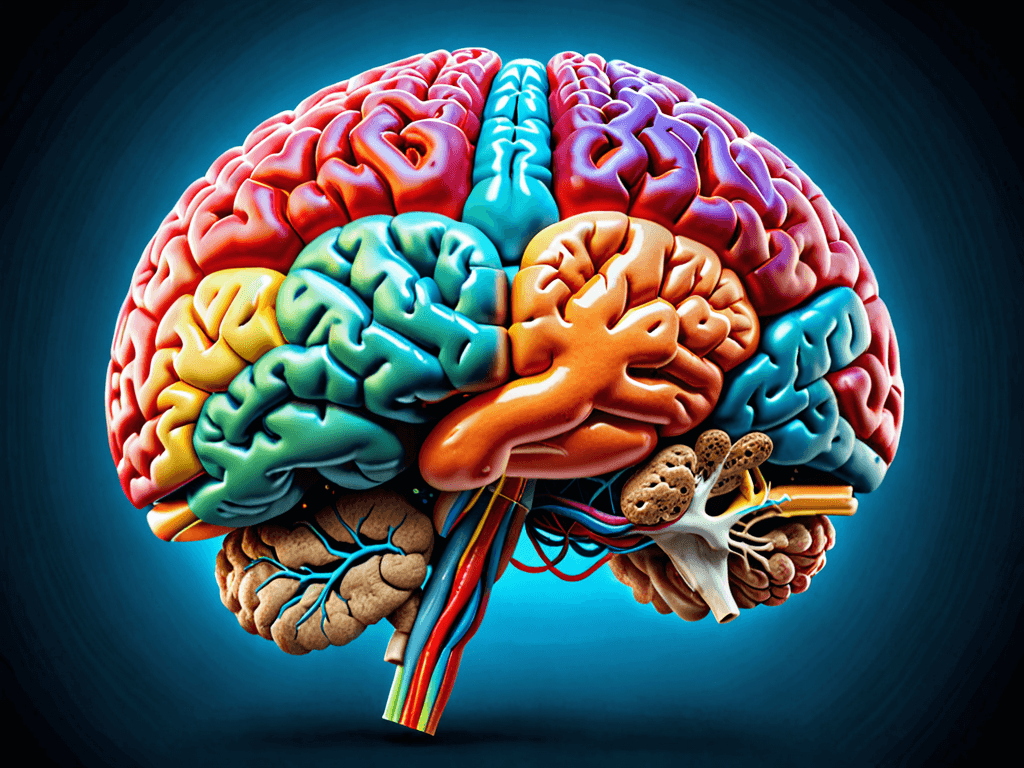Dopamine and procrastination are closely linked, influencing how we approach tasks and manage our time.
Understanding this relationship is vital for increasing productivity and overcoming the tendency to delay important work.
In this article, we will delve into the science behind dopamine, explore the reasons we procrastinate, and provide effective strategies to break the cycle.
Join us as we uncover practical ways to harness your brain’s chemistry for better productivity.
Understanding Dopamine’s Role in Motivation
Dopamine is a crucial neurotransmitter that plays a significant role in motivating our actions. When we set goals or anticipate rewards, dopamine levels rise, leading to feelings of pleasure and satisfaction.
This surge of dopamine encourages us to pursue those goals, driving our desire to achieve and succeed.
However, understanding dopamine’s role in motivation involves recognizing its dual nature. While it can propel us towards productive behavior, it can also contribute to procrastination.
If immediate gratification is more appealing than long-term goals, we might be tempted to delay important tasks in favor of activities that release dopamine more quickly, such as watching TV or scrolling through social media.
To harness the power of dopamine effectively, it’s essential to break tasks into smaller, manageable steps. Each time we complete a small aspect of a larger project, we can experience a dopamine boost, reinforcing our motivation to continue.
Creating a series of achievable milestones can help shift the focus away from procrastination and toward consistent progress.
Ultimately, recognizing how dopamine influences our behavior allows us to develop strategies that optimize our motivation. By leveraging our understanding of this vital neurotransmitter, we can improve our productivity and minimize procrastination.
How Procrastination Affects Your Brain Chemistry
Procrastination can significantly impact how our brain functions, particularly through altering brain chemistry. When we procrastinate, there is a shift in the balance of neurotransmitters, especially dopamine and cortisol. Dopamine, associated with pleasure and reward, is released when we complete tasks, but avoidance leads to lower levels of this neurotransmitter. This lack not only affects motivation but also creates feelings of anxiety and stress due to a rise in cortisol, the stress hormone.
Over time, chronic procrastination may result in a cycle where the brain becomes wired to seek easier tasks to avoid discomfort, thus reinforcing the habit. To combat this, understanding how procrastination affects brain chemistry is essential. Methods such as time-blocking or setting clear deadlines can help in managing procrastination more effectively and restoring a balance in brain chemistry that promotes productivity and well-being.
By bridging the gap between immediate gratification and long-term goals, we can create an environment conducive to maintaining a healthy dopamine level while reducing procrastination-related stress.
The Cycle of Delay: Reasons Behind Procrastination
Procrastination often leads to a cycle of delay that can be difficult to break. When we avoid tasks, we experience a temporary relief that feels satisfying. This instant gratification releases dopamine, making us feel good in the short term.
However, this avoidance creates stress and anxiety about not completing the task, which raises cortisol levels in the body. Over time, this can result in a negative feedback loop where the brain becomes conditioned to delay tasks due to the comfort of immediate rewards.
We keep putting off important duties because they seem overwhelming, causing prolonged stress. To address the cycle of delay, it’s essential to recognize this behavioral pattern. Techniques such as breaking tasks into smaller parts can help create a sense of accomplishment, while setting short deadlines can help combat the desire to procrastinate.
Ultimately, understanding the reasons behind our procrastination can lead to better strategies that encourage productivity and reduce the tendency to delay.
Strategies to Break the Dopamine Procrastination Loop
To break the dopamine procrastination loop, it’s important to implement effective strategies. One powerful approach is to set specific goals. By clearly defining what needs to be done, you will create a roadmap that can reduce feelings of being overwhelmed.
Another strategy is to use the Pomodoro Technique, where you work for 25 minutes and take a 5-minute break. This method can keep you focused while also providing short rewards for your efforts.
Additionally, eliminate distractions in your environment. Identifying and minimizing interruptions can help you concentrate better.
It’s also beneficial to establish a reward system for completing tasks. This can be something small that gives you a dopamine boost, encouraging you to progressively tackle more significant challenges.
Lastly, practice self-compassion. Recognizing that everyone procrastinates occasionally can help you move past guilt and refocus on getting things done.
By employing these management techniques, you can create a healthier relationship with tasks and reduce procrastination over time.
The Importance of Time Management Techniques
Time management techniques are crucial for enhancing productivity and minimizing procrastination. By organizing tasks and prioritizing them, individuals can better understand what needs to be accomplished.
Using a planner or digital tools can help visualize deadlines and allocate time effectively. Setting SMART goals (Specific, Measurable, Achievable, Relevant, Time-bound) can also focus efforts on tasks that matter most.
Additionally, techniques like the Eisenhower Matrix help in distinguishing between urgent and important tasks, ensuring that effort is directed wisely.
Creating a daily routine boosts consistency and builds momentum, making it easier to tackle even daunting tasks with confidence.
Remember, effective time management is not just about working harder, but also about working smarter.
Real-Life Examples of Overcoming Procrastination
These examples show that personalized strategies can effectively combat procrastination.
Sarah utilized a task list strategy, which led her to feel less overwhelmed and more in control after prioritizing tasks.
Mark applied the two-minute rule, resulting in improved productivity by completing small tasks immediately.
Building a Positive Feedback Loop with Dopamine
Building a positive feedback loop with dopamine is essential for enhancing motivation and productivity.
When you accomplish tasks, your brain releases “dopamine”, creating a sense of pleasure and reward.
To establish this loop, start by setting small, achievable goals.
Completing these tasks can boost dopamine levels, encouraging you to tackle larger challenges.
Additionally, celebrating your successes, no matter how minor, reinforces this positive feedback.
Consider rewards for yourself, such as a treat or a break, to associate positive outcomes with your efforts.
Keeping track of your achievements in a journal can also remind you of your progress.
This method not only improves your motivation but also helps develop a habit of getting things done.
Over time, this positive cycle can lead to increased productivity and reduced procrastination, as your brain begins to associate work with positive feelings.
Conclusion: Taking Control of Your Productivity
Taking control of your productivity is vital for achieving your goals and reducing procrastination. Start by implementing effective strategies that fit your personal style.
Prioritizing tasks helps you focus on what truly matters, while setting clear deadlines creates a sense of urgency.
Utilizing tools like calendars and task management apps can significantly organize your workflow. Additionally, practicing mindfulness can enhance your focus and awareness during work sessions.
By recognizing when you are becoming distracted, you can more easily refocus on tasks. Remember to celebrate small victories along the way, as this creates a positive feedback loop that encourages continued productivity.
Establishing a consistent routine and allowing breaks can also improve your overall performance. With these techniques, you can effectively take charge of your time and efforts, leading to remarkable progress in your personal and professional life.
In Summary: Mastering Productivity
Taking control of your productivity is essential for conquering procrastination and achieving significant goals.
By implementing effective strategies such as prioritizing tasks, setting clear deadlines, and utilizing planning tools, you create a structured path to success.
Mindfulness practices enhance focus, helping you stay on track even when distractions arise.
Celebrating small victories can provide motivation, reinforcing positive habits.
Through consistency and dedication to these techniques, you can not only improve your efficiency but also lay the groundwork for sustained success in all areas of your life.
Frequently Asked Questions about Dopamine and Procrastination
How does dopamine affect procrastination?
Dopamine is linked to pleasure and reward; low levels can lead to procrastination as tasks may seem less appealing.
What strategies can I use to overcome procrastination?
You can use techniques like the Pomodoro Technique, setting small goals, and creating a rewarding environment.
Can time management techniques really help?
Yes, organizing tasks and prioritizing them can significantly improve productivity and reduce feelings of overwhelm.
What role does mindfulness play in reducing procrastination?
Mindfulness helps you stay focused and aware of distractions, making it easier to stick to tasks.
How can celebrating small wins motivate me?
Celebrating small victories releases dopamine, which reinforces motivation and encourages continued effort.
Is procrastination a common issue?
Yes, many people struggle with procrastination, and understanding its causes is the first step to overcoming it.


